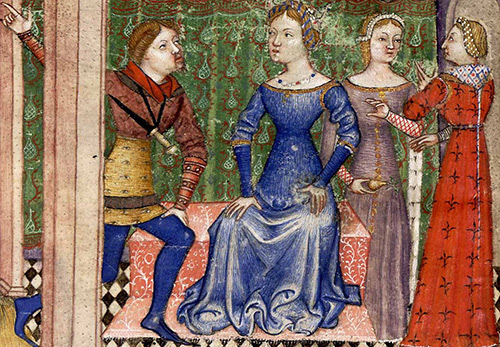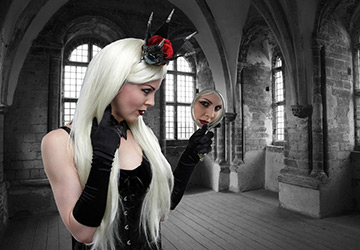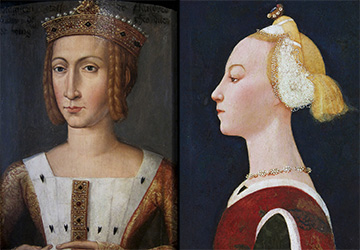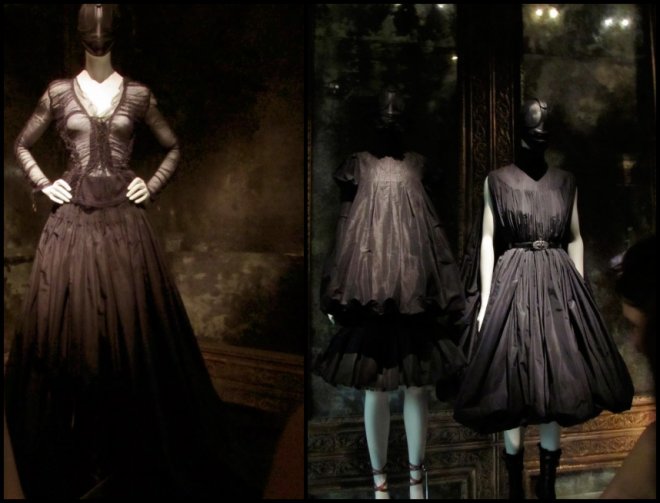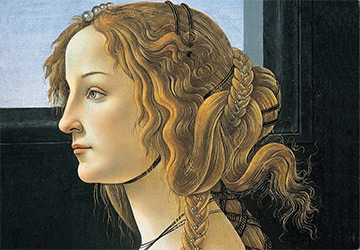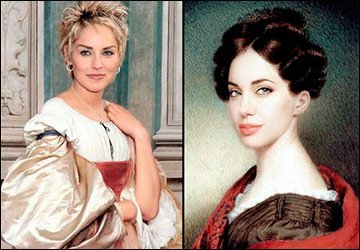Hair care
Medieval Hairstyles - Romanesque
The centuries were so-so - average
Historical reference
The period of the Middle Ages in the history of Europe lasted from the 5th century. until the 15th century In the history of art, the art of the Middle Ages is divided into two periods - the Romanesque style (up to the 13th century) and the Gothic (from the 13th to the 15th centuries).
The Middle Ages can equally well be considered both the Dark Ages and the period of fairy tales - about beautiful princesses and courageous princes. In any case, like any other period of human history, the Middle Ages were different - not black and not white. The very same term "Middle Ages" for this period was invented in the Renaissance (XV - XVII centuries).
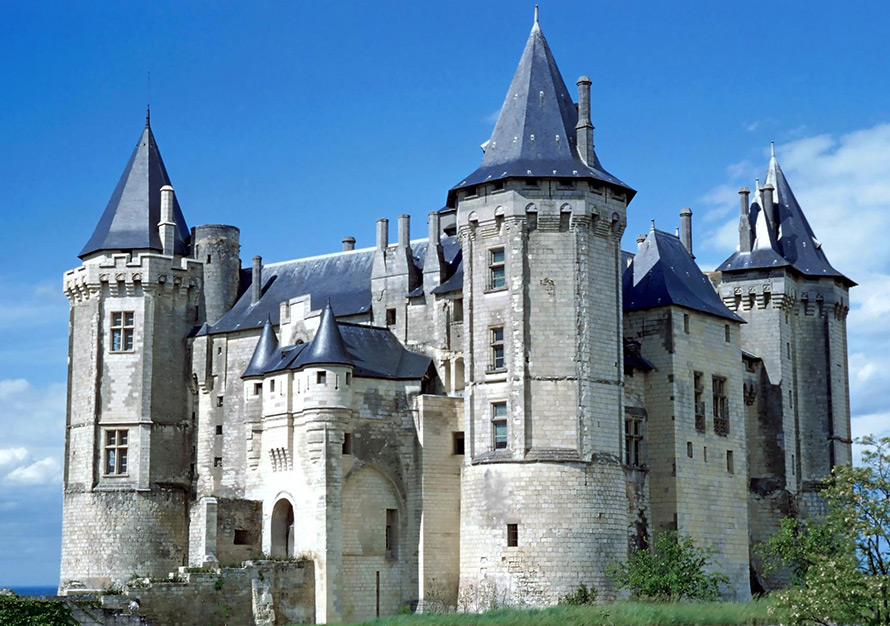
France. Medieval castle
Artists, philosophers, writers of the Renaissance believed that the Middle Ages was a gap, a gap between them and the culture of Antiquity (Ancient Greece, Ancient Rome), which they were so eager to emulate. And no wonder, after all, both in Antiquity and in the Renaissance, it was the human body and the person as such with all his passions and vices, bodily desires that were considered beautiful. During the Middle Ages, the soul was put in the first place, and bodily passions had to be tamed.
The artists of the Middle Ages painted in this way - the body does not matter, and it was painted small and frail, weak. In the Middle Ages, they did not know the prospects and many book miniatures of that period are very similar to children's drawings. But at the same time, they were very fond of bright and saturated colors - yellow, red, green, blue. These colors were used not only by artists, but also in clothing. So this time is in vain considered dark and gray, judging by the way people were dressed, it was very bright.
The period of the dominance of the Romanesque style in art is the period of wars. At this time, fortified castles and no less powerful defensive walls of cities were built. Even monasteries and churches are real fortresses.
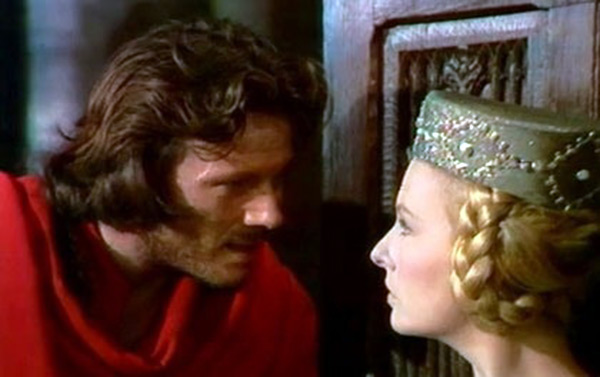
Shot from the movie "Cursed Kings" 1972
Male and female Medieval hairstyles
The ideal of beauty
A man at that time was supposed to be a fearless and courageous warrior, and a woman was fragile and tender. A high forehead was considered beautiful, and therefore women very often shaved their hair over their foreheads. They also plucked eyebrows and eyelashes. And in place of the eyebrows, black arched lines were drawn. But it is worth remembering that only noble women could be fragile and tender, peasant women, on the contrary, valued endurance, and a fairly dense physique was considered beautiful among peasant women.
Male knights were supposed to protect beautiful ladies and treat them with respect. But, again, respect for the ladies did not extend to the peasant women. A knight giving a lady a hand could well have kicked a peasant woman with his boot, but this did not stop him being a noble knight.
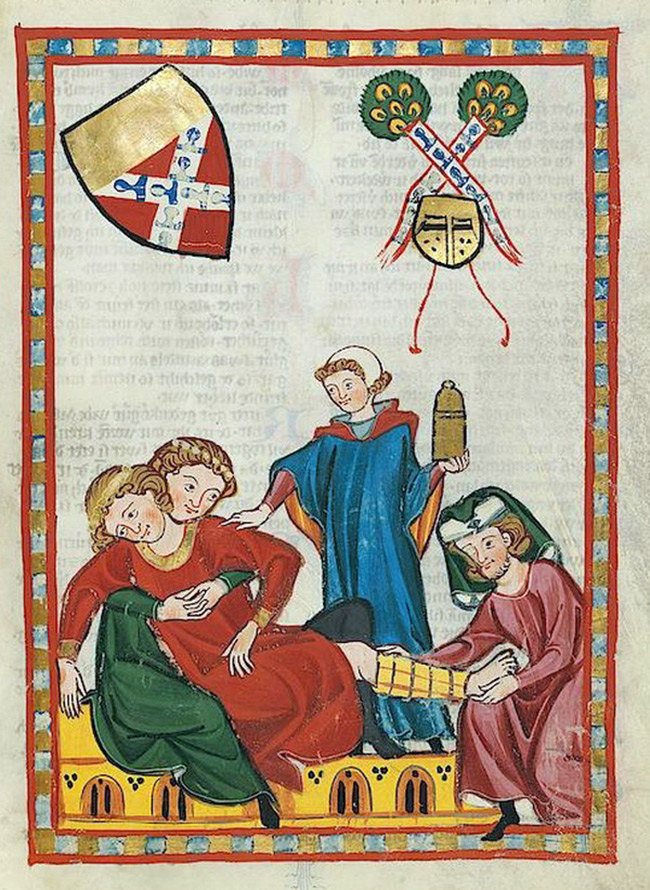
A splint on a broken leg. Miniature of the Manesian Codex.
On the left (two young men) - "Peisan" haircuts. On the right (doctor) - a hairstyle made of semi-long hair (like the hairstyle of Jesus Christ).
As for the hairstyles, the men's hairstyles of that period were quite simple. Moreover, both the peasants and the knight could wear quite similar hairstyles.
The most common hairstyle at that time was a hairstyle called "peisan" hairstyle - the hair around the head was neatly cut and curled in large strands, thick bangs descended on the forehead.
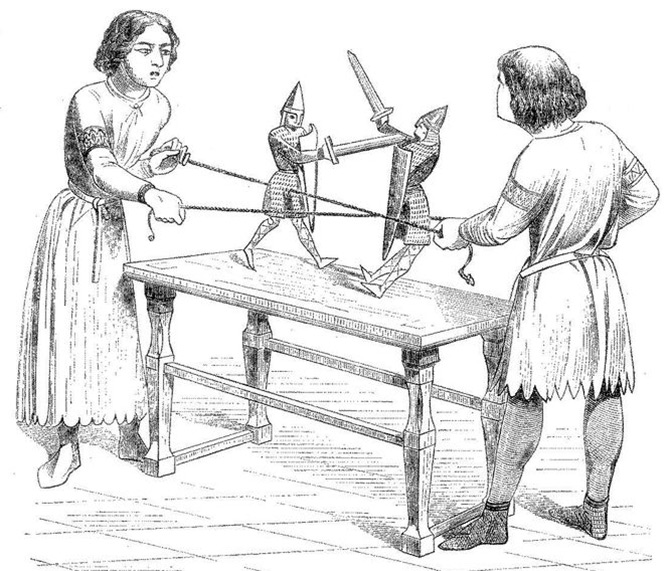
Knight game. Miniature from the manuscript of Gerrada Landsberg, XII century. Boys hairstyles
Noble men very often wore medium length hair, thereby imitating the images of Jesus Christ.
The crusaders wore long hair, as during their campaigns they made a vow not to cut their hair.
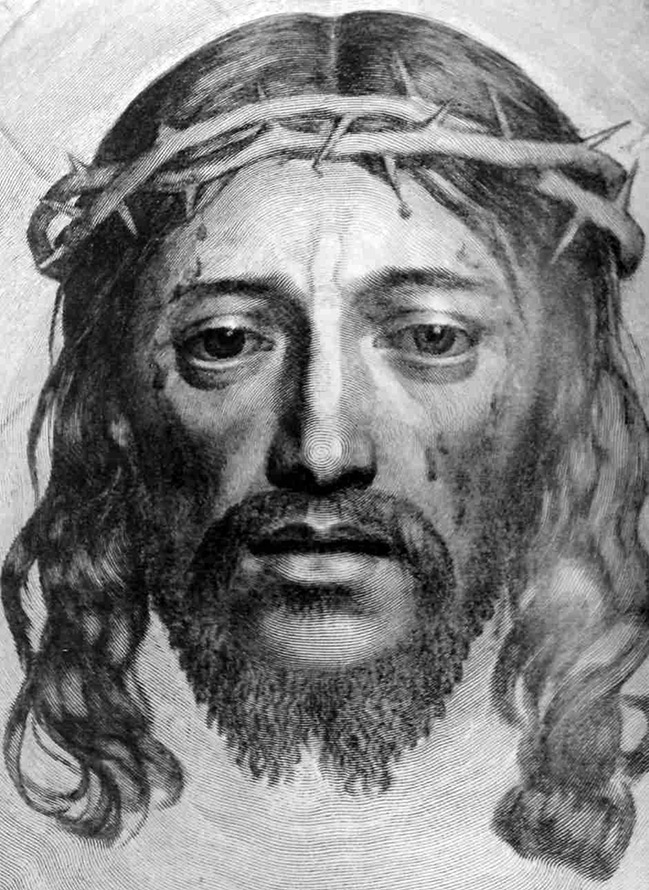
Monks and priests wore a special hairstyle called tonsure - hair was left only around the head, and shaved in the center.
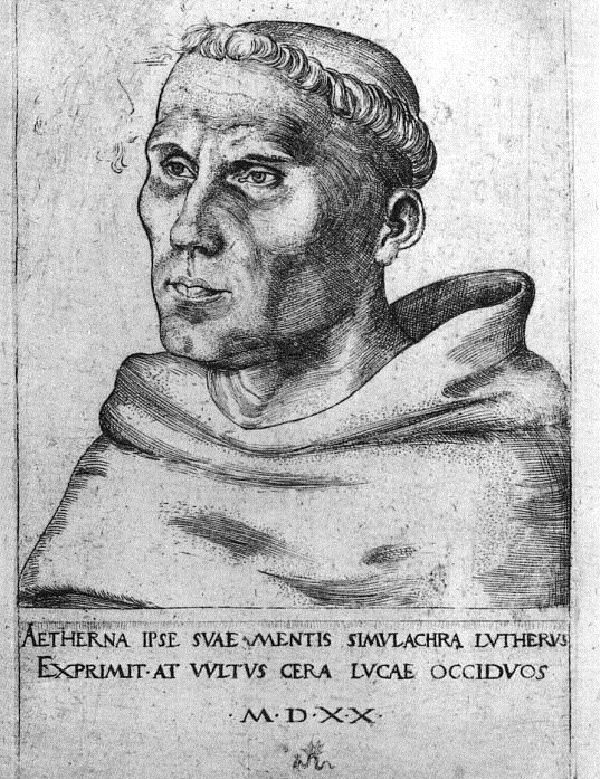
Tonsure.The image is later (16th century).
Shown here is the founder of Protestantism, Martin Luther.
In the Middle Ages, almost all men wore beards. By the way, even among the barbarians during the Roman Empire, a beard was considered a sign of freedom and rebelliousness.
The beard could be of many different shapes. They could also curl it. For the knights, the beard was divided into several strands, which were intertwined with a golden thread or cord. The cord, in turn, was also woven from thin gold threads.
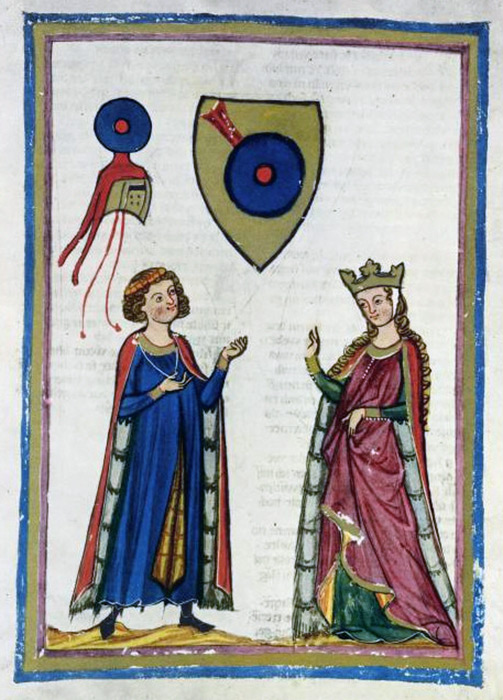
Miniature from the Manes Codex. XIV century.
The woman's hairstyle is "knightly" braids.
Women in the Middle Ages were required to wear hats. Since, according to the rules of the Christian religion, it was considered indecent to go out on the street with your head uncovered. Hence the headdresses of the Middle Ages - the most bizarre shapes and unimaginable sizes. However, in the Romanesque period they were still quite modest. In full measure, the ladies' fantasy will play out a little later - during the Gothic period.
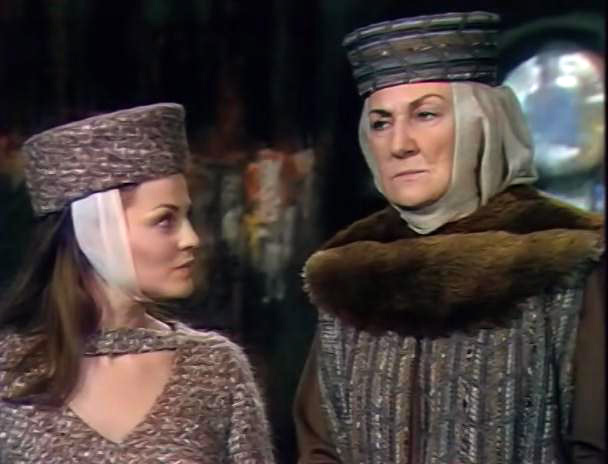
A still from the movie "Cursed Kings". 1972
"Roman" bandage
In the Romanesque period, women wore headscarves and caps. A very popular headdress was called the "Roman" headband. This headdress consisted of two parts - one part tightly fitted the head (it was held by a wide ribbon or hoop), the second part, made of lighter fabric, covered part of the cheeks and went down to the chin. Thus, the face was given the shape of a regular oval, which at that time was considered very beautiful.
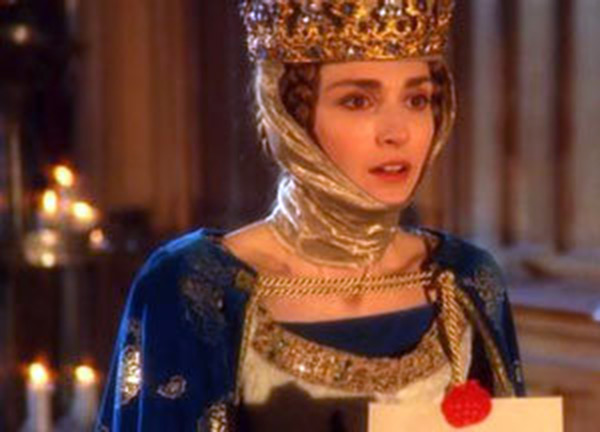
A still from the movie "Cursed Kings". 1972.
"Romanesque" headband and crown
Also, the head could be covered with various veils, which were adhered with the help of crowns or crowns with teeth on top of them.
As for hairstyles, women wore temporal braids intertwined with wide ribbons. They could also wear the so-called "knightly" braids - wide (from the palm) and very long. Their considerable width was achieved due to multi-strand weaving and strips of fabric that were woven into such braids.
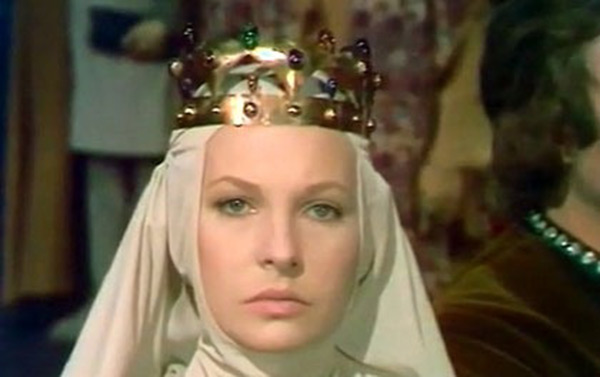
Shot from the movie "Cursed Kings" 1972
Cover
In the V-VIII centuries. among women, the "Roman" hairstyle was very popular - the hair on the back of the head was gathered in a bun, and a light veil or scarf was worn on top. The fashion for braids appears in the VIII-IX centuries. and will persist until the Renaissance period.
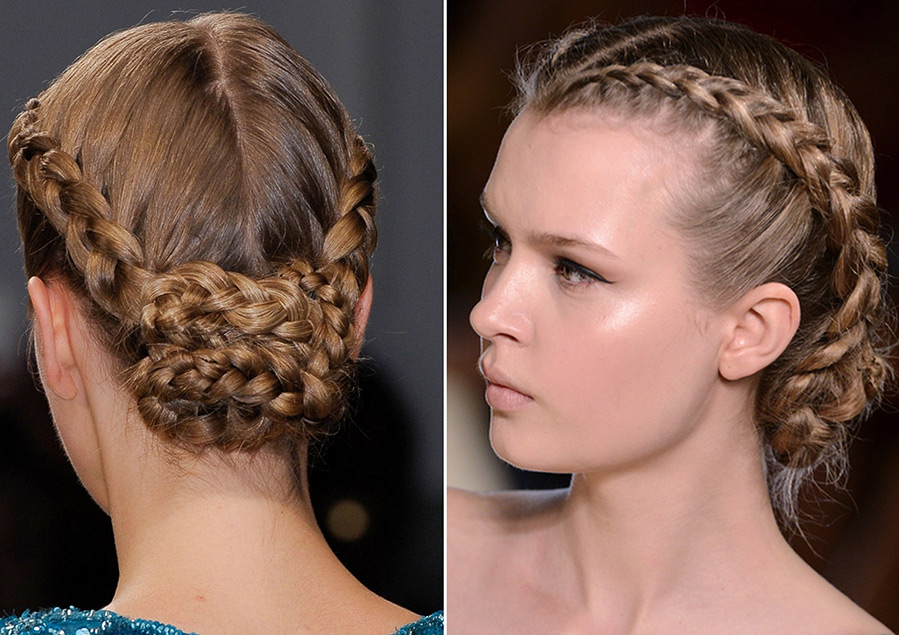
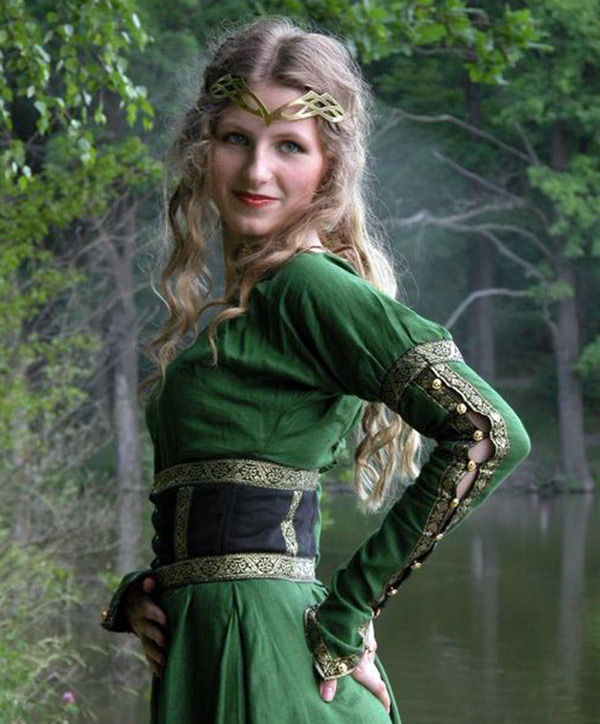
Veronica D.
Comments and Reviews
Add a comment
Rating news
Shades of clothing that make women look younger
What shades of hair make women younger: rules and photos
Funny wedding dresses - photos and ideas
12 most expensive down jackets for the winter
How to look 25 at 40: tips from supermodels
Beautiful schoolgirls
Anti-aging haircuts and hairstyles for women
Fashionable skirts for autumn and winter
Fashionable women's trousers for the cold season
Fashionable and stylish sandals for summer 2024
Spring-summer 2024
 Fashionable dresses and tops with thin spaghetti straps
Fashionable dresses and tops with thin spaghetti straps
 Bandana tops: how to wear stylishly and beautifully
Bandana tops: how to wear stylishly and beautifully
 How to put together the perfect men's wardrobe for the summer
How to put together the perfect men's wardrobe for the summer
 Fashionable shorts for spring-summer 2024
Fashionable shorts for spring-summer 2024
 Fashionable skirts for spring-summer 2024: a guide to online shopping
Fashionable skirts for spring-summer 2024: a guide to online shopping
 The most fashionable dresses spring-summer 2024: styles and colors
The most fashionable dresses spring-summer 2024: styles and colors
 Fashionable total look 2024: image ideas and trends
Fashionable total look 2024: image ideas and trends
